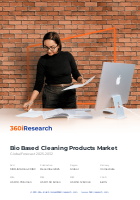
Bio Based Cleaning Products Market by Product Type (Dishwashing Agents, Laundry Detergents, Surface Cleaners), Formulation (Gel, Liquid, Powder), Source, Packaging Type, End User, Distribution Channel - Global Forecast 2025-2032
SKU
MRR-1A1A064C018C
Region
Global
Publication Date
December 2025
Delivery
Immediate
2024
USD 10.70 billion
2025
USD 11.39 billion
2032
USD 18.12 billion
CAGR
6.81%

Download a Free PDF
Get a sneak peek into the valuable insights and in-depth analysis featured in our comprehensive bio based cleaning products market report. Download now to stay ahead in the industry! Need more tailored information? Ketan is here to help you find exactly what you need.



